CGM is a true game-changer.
If you’re well-versed in CGM, you’ll want to check out the full CGM series along with the podcasts that accompany it.
A CGM device is the most important part of the diabetes management kit. I am sure you have one; if not, give your head a wobble!
This picture shows the difference between CGM interstitial glucose and finger-prick blood glucose measurements.
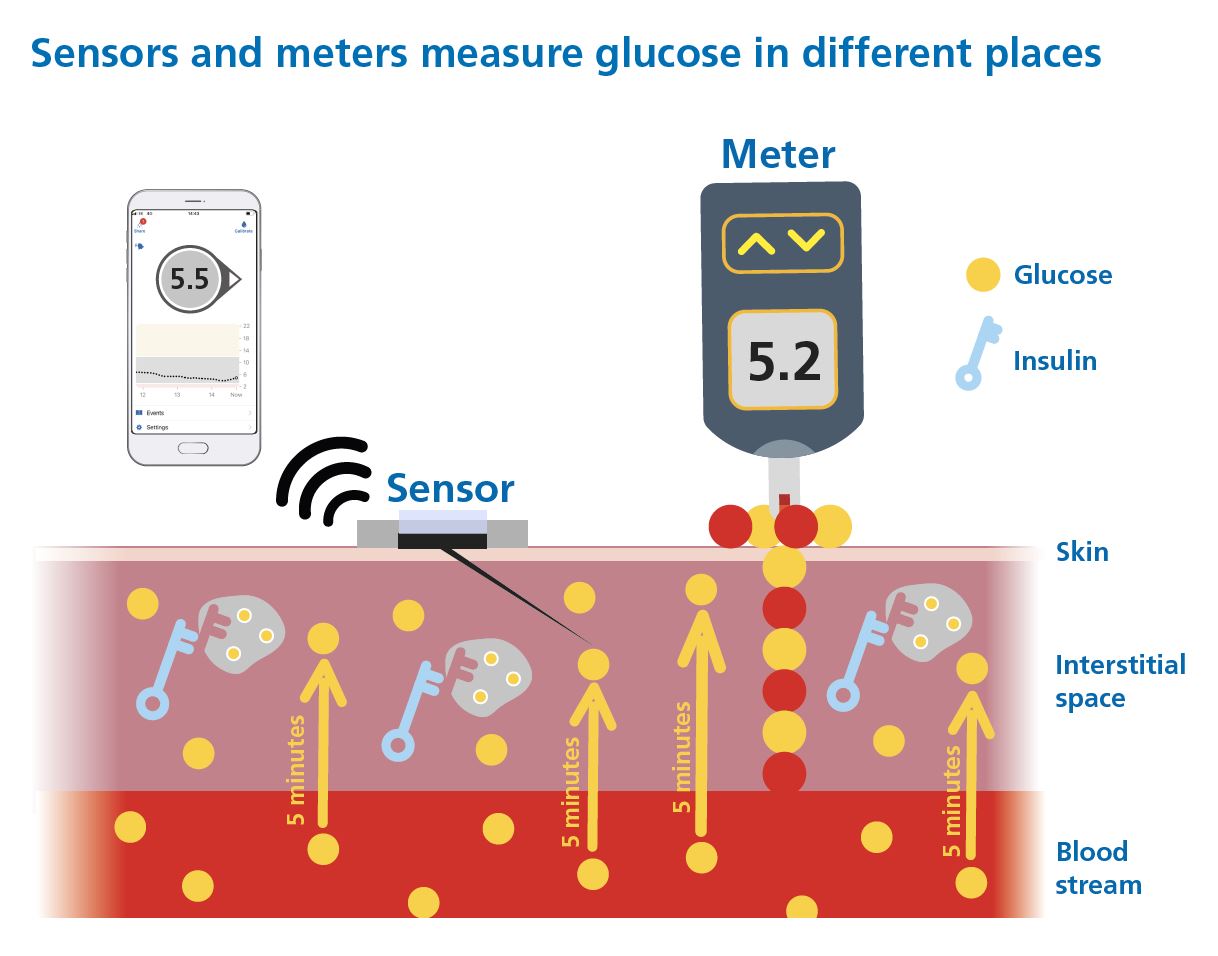
Key things:
- The CGM reading is about 5 minutes behind the blood glucose reading, so they will never match exactly.
- The CGM continually reads the glucose and updates the display every 5 minutes.
- The CGM tracks the direction of glucose travel and lets you know where it is heading. The arrow/s allow you to see into the future to stop highs and prevent lows. Each CGM has a different arrow system but they give the same information. They tell you where the glucose will be in 10 minutes. Grace and Jude, if we move to America, we will be using mg/dL, and 1.0mmol/L = 18mg/dL. But to keep it simple:
- 2.0mmol/L = 40mg/dL
- 1.5mmol/L = 30mg/dL
- 1.0mmol/L = 20mg/dL
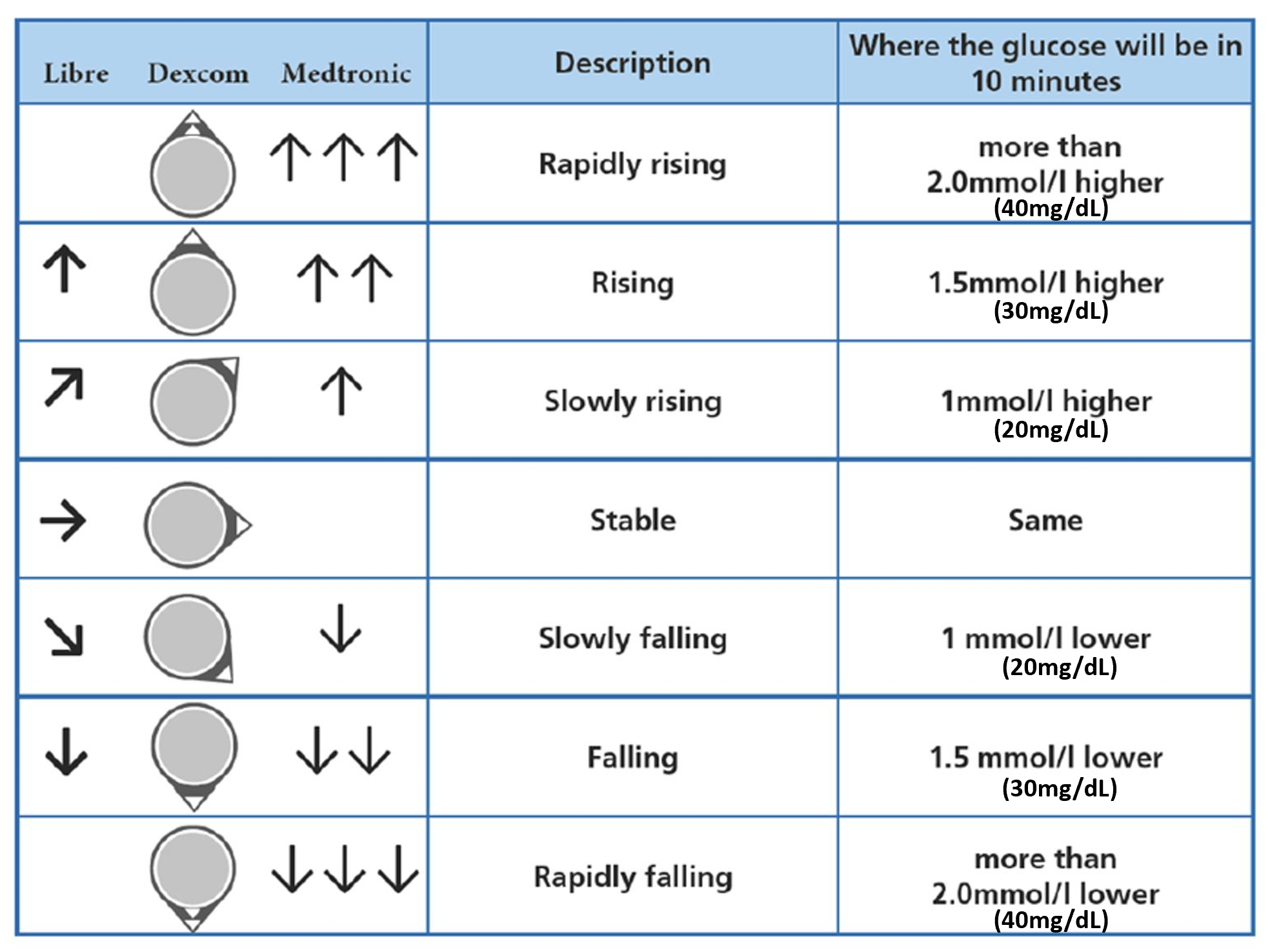
CGM’s have come a long way. Back in 2010, I used one from Medtronic. The sensor was inserted by what can only be described as a javelin masquerading as an insertion needle! The sensor only lasted three days and the accuracy was dog crap! The blood and CGM values were often more than 3.0mmol/L (55mg/dl) apart. Hence, needing to calibrate four times daily and confirm highs and lows with finger pricks.
However, I loved it. It was the best of its generation, and it helped me to understand where my glucose went twenty-four hours a day.
I need to show gratitude to Medtronic. Medtronic has pushed this space over the last twenty years. Without Medtronic’s investment, the CGM field would still be in the stone age. I worked for Medtronic for five years and know how passionate they are about closing the loop. Thank you, Medtronic.
How accurate are the CGM devices today?
Most CGM devices today meet the basic accuracy required to replace finger picks. This table shows the accuracy level required and what differences in measurements you should expect.
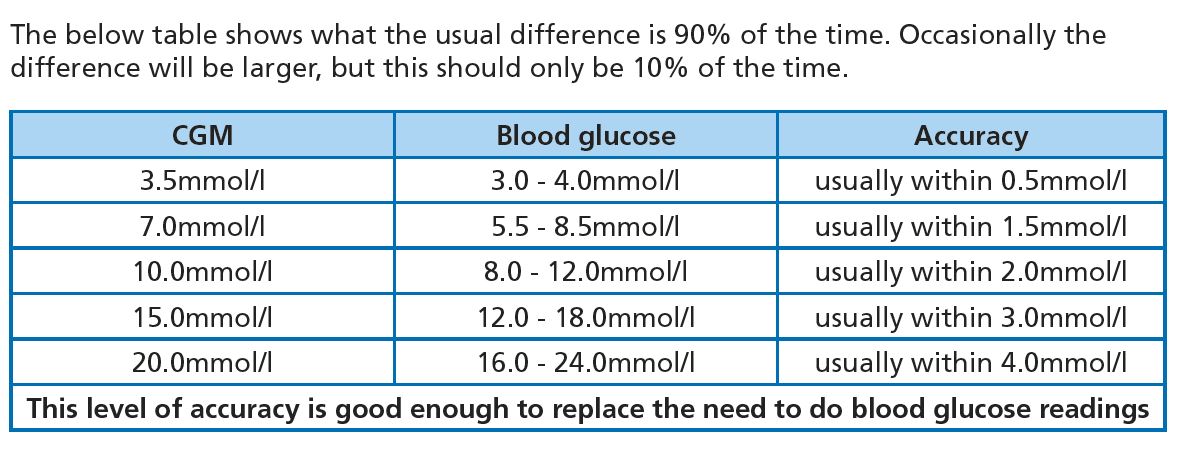
I created a CGM Guide to support CGM device selection – enjoy!
Why is CGM so much better than finger pricks?
There are three main reasons:
- The more feedback you have, the quicker you learn.
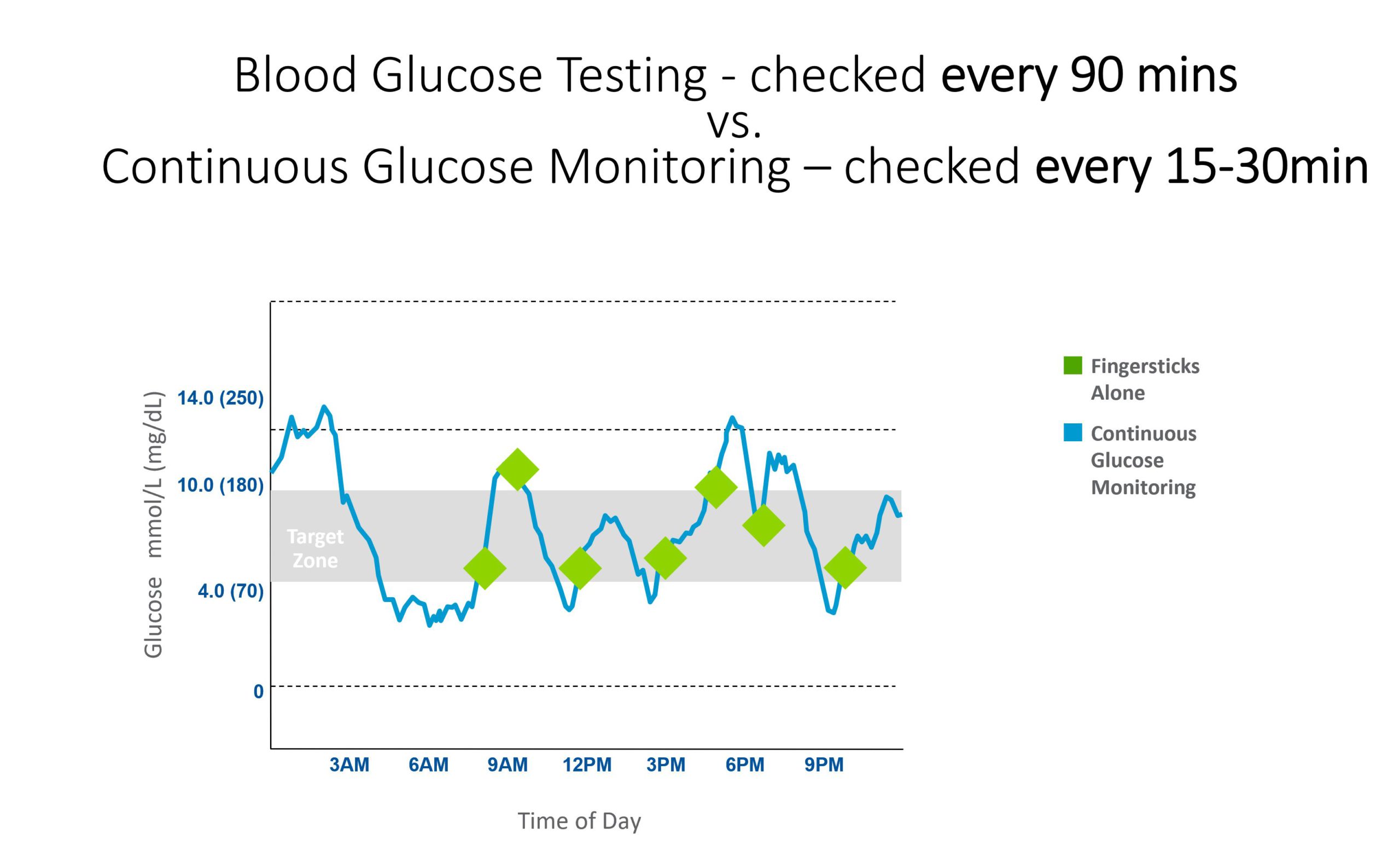
- High and low alerts act like barriers at the bowling alley; they keep you from falling over the edge.
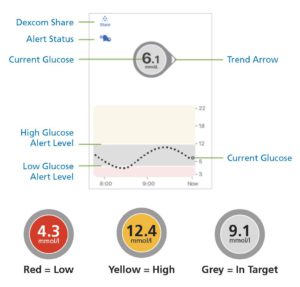
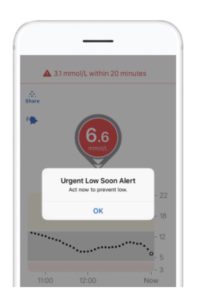
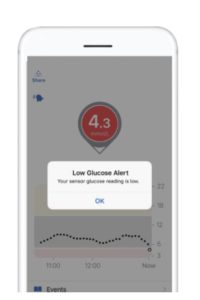
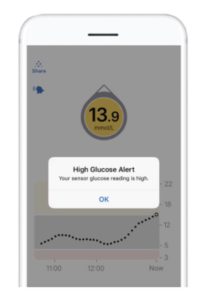
- Arrows allow you to predict the future and use Dynamic Glucose Management to stay on target.

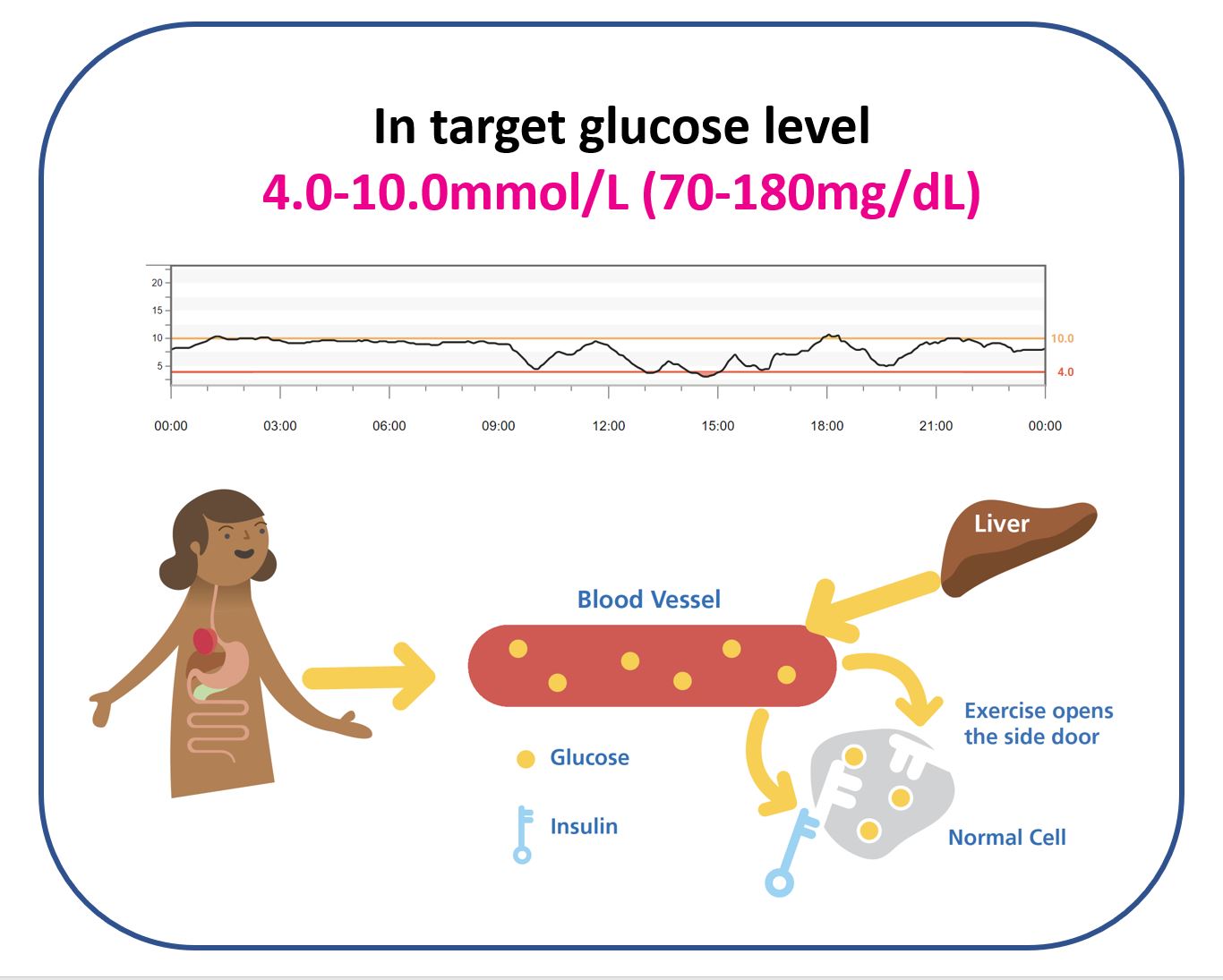
How much time in range (4.0-10.0mmol/L or 70-180mg/dL) should I aim for?
This table shows that the higher the percentage of time your glucose is in range, the better your daily energy and future health. However, the amount of time spent managing diabetes goes up as time in range increases.
It’s a balancing act that should fluctuate as you grow up.
Grace and Jude, in the early years, Mummy and I will use Dynamic Glucose Management to get to at least 85% time in range. When you hit your teens, keeping above 70% is manageable using Dynamic Glucose Management more loosely. Then, as you become an adult, the World is your oyster.
You may even want to join the nerdy glucose management crew, with 99% time in range, by fully implementing Dynamic Glucose Management. What matters is getting the balance that works for you!
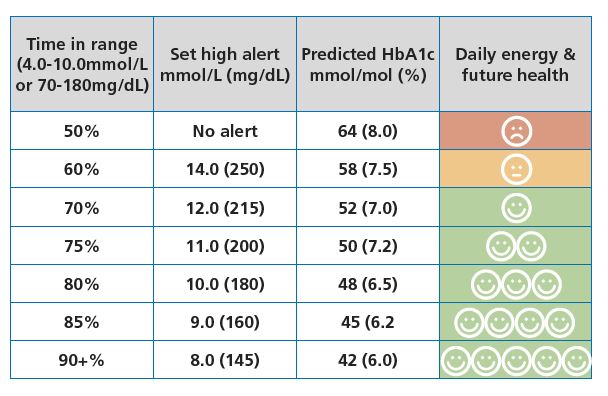
What’s next? Basal Insulin

